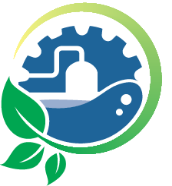Our technical solutions are based on combinations of different technological areas.
One of the secrets behind our success is that there aren’t any secrets behind it. Technology solutions from Vilokan Recycling Tech are designed and built as standard solutions. That allows us to guarantee reliable solutions with good access to spare parts. The same applies to our processes. Our solutions are built on firmly established and well-documented technology areas.
What we bring to the table is more than 30 years of experience regarding which combinations of technologies work best for which solutions. Which components are most suitable for what.
The most common technology areas we combine in our solutions are:
F-MVR evaporation technology
From 2 m3/h up to 200 m3/h or more. The technology is based on forced circulation combined with vapour compression. F-MVR or mechanical vapour recompression (also known as mechanical vapour compression or MVC) is a technology in which vapour is compressed in a blower to a higher temperature and pressure. The compressed vapour is then reused as a source of energy instead of adding external vapour. The technology also facilitates advanced, so-called condensate splitting and extremely high concentration and dewatering.
Vilokan VRT_EnvoVAP MVR
Evaporation
A tried and tested method for separating out dissolved metals, salts and other contaminants from the water. We use techniques including low vacuum, falling film technology, multi-stage evaporation and forced circulation. The choice of method depends on the properties of the dirty water and the type of application.
PDF – Vilokan VRT EnvoVap PD-1. 30-400
PDF – Vilokan VRT EnvoVap PD-1. 500-800
PDF – Vilokan VRT EnvoVap PD-1. 1000-1500
PDF – Vilokan VRT EnvoVap PD-1. 2000-2500
PDF – Vilokan VRT EnvoVap PD-1. 3000-4000
PDF – Vilokan VRT EnvoVap VS HP, 250 – 2000
PDF – Vilokan VRT EnvoVap VS HP, 3000 – 15000
PDF – Vilokan VRT EnvoVap VR HP
PDF – Vilokan VRT EnvoVap DRY HP 105-42
Distillation
Our distillation facilities allow us to separate solvents from paint, oil, grease, wax and other substances featuring various boiling points. As the process does not affect the properties of the solvents themselves, they can easily be reused.
PDF – Vilokan VRT Standard system
PDF – Vilokan VRT Large Industrial systems
Ion exchange technology
Ion exchange technology is used to separate heavy metals. Examples of fields of application include polishing wastewater containing metals, purifying flue gas condensate, purifying water from wet scrubbers, polishing subsequent to ultra-filtration or chemical precipitation, purification of groundwater, mining water or leach water contaminated with metals.
PDF – Vilokan VRT EnvoChange-JB 100 l-hr 100m3 h
Filtration technology
Filtration of particles and organic substances is used to reduce water volumes through recirculation; it can also be applied before or after other technologies such as evaporation or ion exchange. Mechanical separation of sinking or floating particles is used as pre-treatment for evaporation, for example, or when reuse is possible with no further purification. The method chosen can involve ultra-filtration, centrifugation, bag filters or filter presses.
PDF – Vilokan VRT EnvoCEP-UF 30-4000 l
PDF – Vilokan VRT EnvoPress
PDF – Vilokan VRT Envo-RO
Adsorption
Adsorption has gained in significance as an industrial separation process in recent years. Activated charcoal is increasingly used to purify drinking water, as well as to remove slowly degradable contaminants from municipal and industrial wastewater. The most common process in Vilokan’s charcoal filter involves the carbon adsorption agent binding the adsorbate oil to its pores.
PDF – Vilokan VRT Envo CEP Carb

 A company in
A company in